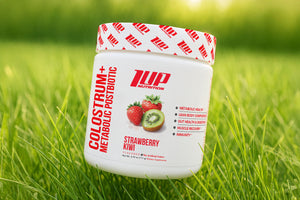Stretching is something ingrained in us from childhood PE class as a “must” before doing any sort of physical activity. While modern evidence disputes the benefits of stretching (static stretching, specifically) before an intense workout, there’s no denying that it does offer benefits and deserves consideration for inclusion in your weekly workout program.
Join us as we cover some important stretching fundamentals -- why, when, and how to get the most of this age-old practice.
Why Should I Stretch?
Stretching isn’t just good for alleviating feelings of tightness in sore muscles. It also offers a number of other important benefits, including:
Stress-Relief
Static stretching forces you to slow down, calm yourself, and focus, which stands in sharp contrast to the maelstrom that is modern living. Spending a few minutes of quiet stretching can help block out the noise (texts, DMs, emails, etc.), allowing you to re-center and de-stress so that you can attack the rest of the day with vigor!
In fact, if you typically have trouble unwinding at the end of the day and getting to sleep, stretching for a few minutes can do wonders to unload a busy mind. For even greater relaxation, you can pair a nighttime stretching routine with a serving of 1UP RELAX or one of our nighttime recovery aids, such as Beauty Dream PM or Recharge PM.
Increase Circulation
Stretching stimulates blood flow throughout the body. This helps deliver fresh, oxygen- & nutrient-rich blood to tired muscles, supplying them with important nutrients -- vitamins, minerals, and essential amino acids that help them to recover better.
Greater Range of Motion
The most common reason individuals stretch is to help alleviate feelings of tightness in a particular muscle group. Tight muscles can reduce range of motion, which can subsequently impair your performance in the gym or on the field of competition.
Stretching helps alleviate this tightness, allowing you to achieve a greater range of motion during exercises. This leads to more work being done (more weight is moved over a greater distance), which translates to more calories burned and greater results from your workouts!
When Should I Stretch?
You can technically stretch anytime you want to. That being said, there may be certain times that are more optimal than others.
For starters, realize there are two main types of stretches:
- Static stretching: the kind you’ve done since elementary PE class
- Dynamic stretching: a series of “functional” movements that prime your body for upcoming activity (e.g. doing jumping jacks or arm swings before a resistance training workout)
Dynamic stretching is typically recommended over static stretching as a warmup due to some research showing that holding intense static stretches for longer than 60 seconds and proceeding immediately into a resistance-training exercise can hinder strength and power output.[1] Furthermore, static stretching (performed incorrectly) can torque joints and ligaments or irritate nerves, leading to pain or reducing joint stability.
As such, save your static stretching for after your workout, and implement it as part of your cool-down.
Static stretching can also be done other times during the day (for instance, if you’ve been sitting at a desk for several hours working) or before bed. Keep in mind, if you’ve been sedentary for a while, be gentle with your stretches. Being too aggressive with static stretches if you’re not warmed up can lead to injury.
How to Stretch
Just like with any other sort of physical activity, there is a correct way to do it, and an incorrect way. Here are a few guidelines to keep in mind when you’re stretching.
Do a Warm-Up
As we just mentioned above, performing an intense stretch “cold” increases the risk for pain and injury. Therefore, before you start stretching, do some light activity. Even something as a couple minutes of jumping jacks or a brisk 5-10 minute walk is sufficient to warm your body up and get it primed for stretching.
Do Hold Stretches at Least 30 Seconds
You muscle doesn’t immediately loosen up when you start stretching. It takes some time. The exact time varies somewhat, but you want to hold a stretch at least 30 seconds and up to a few minutes.
Do NOT Hold Your Breath
Holding your breath leaves your body tight. Performing deep belly breaths helps relax your mind and body, allowing you to sink deeper into the stretch.
Do Stretch After a Workout (Not Before)
Performing intense static stretches before training can reduce athletic performance. Opt instead for a sequence of dynamic stretches which put your muscles through movements similar to those they’ll be performing during the workout.
Static stretches are ideal for post-workout cool-downs to help elongate the muscles. It also helps to reduce cortisol and stress levels, which are elevated during training. After you cool-down, also make sure to fuel your body with quality nutrition, such as a scoop of 1UP Protein Powder, which helps stop muscle breakdown and kickstart the recovery process.
Takeaway
Stretching offers a number of benefits beyond helping to elongate muscles and relieve tightness, including stress relief and recovery. It can be included either post-workout or any other time of day.
In addition to stretching, some other options to help alleviate muscle tightness and increase circulation, include:
- Foam rolling
- Myofascial release
- Yoga
- Massage
References
- McHugh MP, Cosgrave CH. To stretch or not to stretch: the role of stretching in






